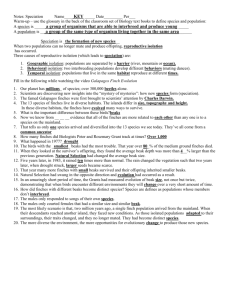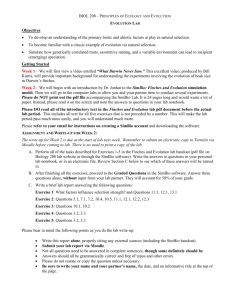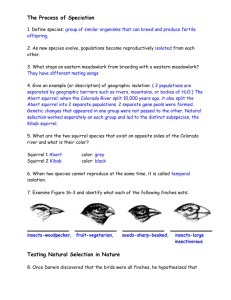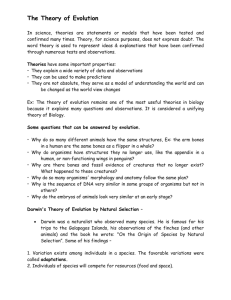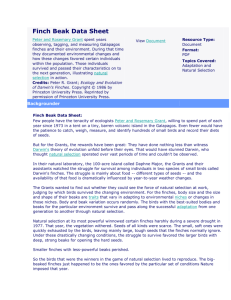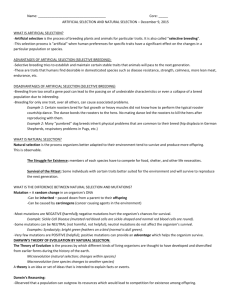The Working Paper
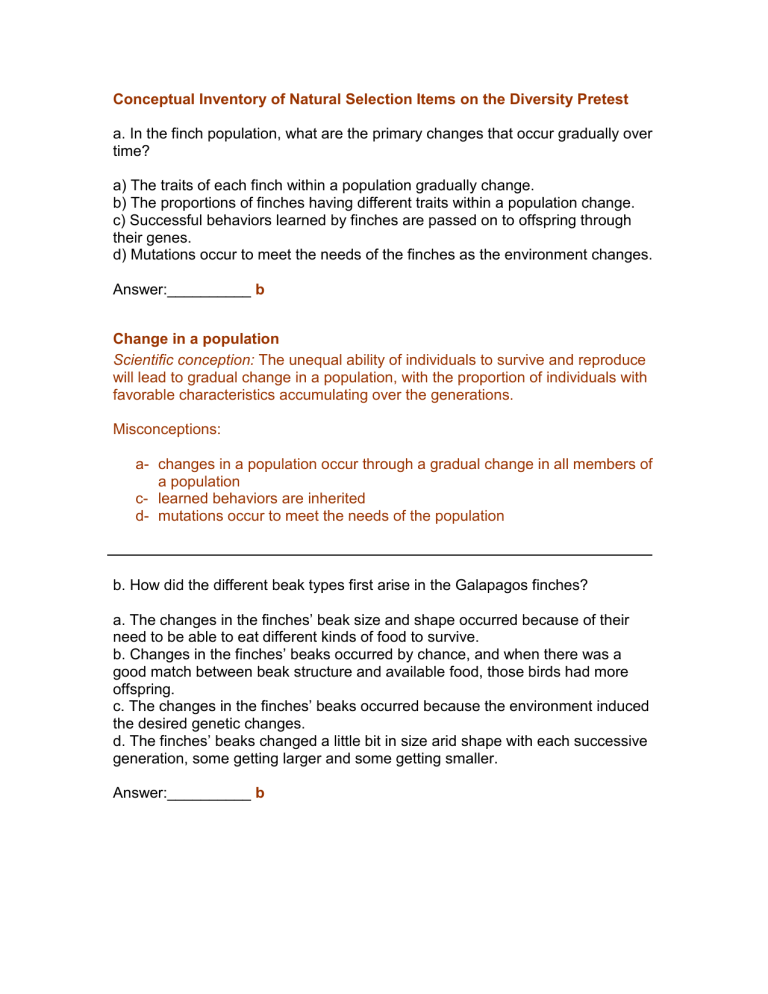
Conceptual Inventory of Natural Selection Items on the Diversity Pretest a. In the finch population, what are the primary changes that occur gradually over time? a) The traits of each finch within a population gradually change. b) The proportions of finches having different traits within a population change. c) Successful behaviors learned by finches are passed on to offspring through their genes. d) Mutations occur to meet the needs of the finches as the environment changes.
Answer:__________ b
Change in a population
Scientific conception: The unequal ability of individuals to survive and reproduce will lead to gradual change in a population, with the proportion of individuals with favorable characteristics accumulating over the generations.
Misconceptions: a- changes in a population occur through a gradual change in all members of a population c- learned behaviors are inherited d- mutations occur to meet the needs of the population b. How did the different beak types first arise in the Galapagos finches? a
. The changes in the finches’ beak size and shape occurred because of their need to be able to eat different kinds of food to survive. b. Changes in the finches’ beaks occurred by chance, and when there was a good match between beak structure and available food, those birds had more offspring. c. The changes in the finches’ beaks occurred because the environment induced the desired genetic changes. d. The finches’ beaks changed a little bit in size arid shape with each successive generation, some getting larger and some getting smaller.
Answer:__________ b
Origin of variation
Scientific conception: random mutations and sexual reproduction produce variations; while many are harmful or of no consequence, a few are beneficial in some environments.
Misconceptions: a - mutations are intentional: an organism tries, needs, or wants to change genetically c- mutations are adaptive responses to specific environmental agents d- mutations are intentional: an organism tries, needs, or wants to change genetically c. What type of variation in finches is passed to the offspring? a. Any behaviors that were learned during a finch’s lifetime. b. Only characteristics that were beneficial during a finch’s lifetime. c. All characteristics that are genetically determined. d. Any characteristics that were positively influenced by the environment during a finch’s lifetime.
Answer:__________ c
Variation inheritable
Scientific conception: Much variation is heritable.
Misconceptions: a - traits acquired during an organism’s lifetime will be inherited by offspring b- when a trait (organ) is no longer beneficial for survival, the offspring will not inherit the trait d- traits that are positively influenced by the environment will be inherited by offspring
d. What caused populations of birds having different beak shapes and sizes to become distinct species distributed on the various islands? a. The finches were quite variable, and those whose features were best suited to the available food supply on each island reproduced most successfully. b. All finches are essentially alike and there are not really fourteen different species. c. Different foods are available on different islands and for that reason, individual finches on each island gradually developed the beaks they needed. d. Different lines of finches developed different beak types because they needed them in order to obtain the available food.
Answer:__________ a
Origin of species
Scientific conception: An isolated population may change so much over time that it becomes a new species
Misconceptions: b - speciation is a hypothetical idea c- organisms can intentionally become new species over time (an organism tries, wants, or needs to become a new species) d- organisms can intentionally become new species over time (an organism tries, wants, or needs to become a new species) e. Populations of finches are made up of hundreds of individual birds. Which statement describes how similar they are likely to be to each other? a. The finches share all of the same characteristics and are identical to each other. b. The finches share all of the essential characteristics of the species: the minor variations they display don’t affect survival. c. The finches are all identical on the inside, but have many differences in appearance. d. The finches share many characteristics, but also vary in many features.
Answer:__________ d
Variation within a population
Scientific conception: individuals of a population vary extensively in their characteristics
Misconceptions: a - all members of a population are nearly identical b- variations only affect outward appearance, don’t influence survival c- variations only affect outward appearance, don’t influence survival
